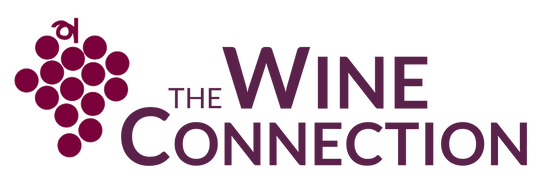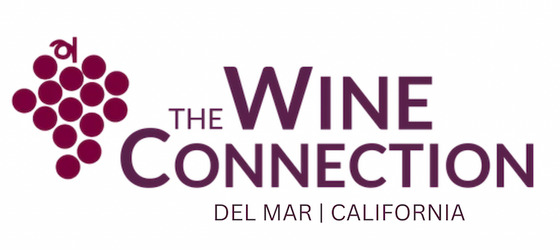Sorgente Prosecco Brut, Veneto, Italy
$19.99 USD
The Sorgente project was born out of the mutual desire for The Source and a special undisclosed estate (sorry!) to work together with only their Prosecco wines. Given that these wines are not publicly connected to their estate, it doesn’t make sense to speak much of the estate history. Here we will focus on the landscape and technical details, which are many.
Sorgente Prosecco comes from a six hectare parcel of Glera vines located in Friuli-Venezia Giulia, and a solid golf shot away from the Veneto border to the west, the vineyards sit only a few hundred meters from the natural spring (called sorgente in Italian) at the nascita of the Livenza River. Interestingly, we chose the name Sorgente because it means “Source” in Italian, but I had no idea at the time that it was in fact bordering a river that begins from a natural spring.
The proximity to the Alps (which begins no more than ten miles to the north) and the Adriatic (twenty miles away) brings an ideal temperature characterized by large diurnal swings from day to nighttime. As you all know, this is crucial for the development of complex phenolics, fresh acidity and elevated aromatics—all necessary for a proper Prosecco to remain true to form (bright, fresh, minerally) and function (pleasure over intellect, although I found this Prosecco surprisingly intellectual and form-fitted to our company style).
The vineyard soils are endowed with limestone and clay, both a mixture of the former salty marshland that existed here millions of years ago (just like much of France’s limestone spots—Burgundy, Loire Valley, Jura, etc), along with alluvial soils largely composed of limestones deposited by the Livenza and the neighboring river, Meduna. From a pedigree standpoint, there is good reason that one would discover the mineral nuances of this “simple” Prosecco due to its soil composition and climatic balance. In most clay based soils (which is true in this case) the development of the grapes is longer on the vine, which further contributes to the layers of potential complexity and unexpected ageability for a Prosecco—our Sorgente partners have suggested to me that the prime moment for drinking their Prosecco starts a year to eighteen months after bottling.
The average age of their sustainably farmed vineyards ranges from eight to fifteen years, with a density of 3500 plants/ha. They have suggested (which makes sense to some degree) that for Prosecco production, old vines are not optimal when again considering the form and function of Prosecco in the world of wine. Young vines bring the vivacity up on the finished product while older vines add weight and can bring the frequency down a bit—Prosecco is meant to be ethereal, not grounded.
While they are lumped into the very broad interpretation of what is sustainable farming, they have a great respect for nature and its contribution to a wine’s authenticity. They have abandoned herbicides and pesticides completely. All in the vineyard is managed by hand and the soil tilled by machine, with only vineyard treatments of copper and sulfur—standard and obligatory (if you actually want to have grapes) in European vineyards farmed with any method whether it be sustainable, organic, biodynamic and the less clearly defined “natural.” The harvest is all done by hand—once again, a true rarity within the Prosecco DOC—and usually takes place in September.
Instead of this section being dedicated to the vineyards (which are explained in The Story above) this will be dedicated to the technical process of the winemaking.
All the grapes are destemmed and the berries go through a soft pressing. This first contact with the skins is rich in impurities, which would alter the final product away from their vision for their Prosecco. The first press and free run juice is set aside and sold as bulk wine to other Prosecco producers. Then the grapes go through a second pressing at a maximum pressure of 0.4 bars. (Please note that many whole cluster white wines are pressed 2.0 bars, while gentle pressing on reds once finished with fermentation are at levels closer to 0.4—needless to say, this is very gentle for white grapes.) Once this process is completed, the must called “cuore/heart” is implemented with a small quantity of sulfur and is then stored in stainless steel tanks. The remaining must that is pressed beyond the level of 0.4 bars is also sold in bulk. In the end, they sell more than 60% of their Prosecco base wine through their rigorous selection process, leaving a mere 40% off their six estate hectares. Again, this is highly unusual for a Prosecco house and a clear demonstration of how serious they are about their finished wine.
The must is settled and then transferred to another tank where it is brought to a temperature of 17°/18°C in order to start the first fermentation—an indigenous yeast ferment which lasts about twelve days. Once the sugar becomes alcohol with 10-10.5% by volume, the sparkling base is finished and will be kept in tanks at a constant temperature of 10/12°C.
The sparkling process is made when needed and performed in an autoclave (high pressure tank) by adding sugar and selected neutral yeasts to finish the job. (Primary fermentation is natural yeast and second is cultured; that said, the wine’s aromatic components—both the nose and palate—have already been developed prior to the use of cultured yeast, which serve the function of quickly turning the sugar into CO2 gas and alcohol—the amount of sugar converted only amounts to a single degree of alcohol, therefore the influence of the cultured yeast at this point in the game is relatively inconsequential.) The wine is brought to 15/17°C and kept constant for more or less 20 days. Once the desired pressure and residual sugar is obtained, the fermentation is stopped by bringing the temperature down to 2°C. The wine will be kept in contact with the fine lees—a combination of natural and to a much lesser degree, cultured—for more or less 60 days, with weekly bâtonnage to bring texture to the palate. During this two-month period the wine develops its complex and textured mouthfeel from the lees as well as smaller more fine bubbles than those that are bottled immediately and sent to market.
Due to the residual sugar content (like all wines with a notable sugar content) the wines are filtered. The residual sugar for the Extra Dry is 12g/l and the Brut, 5g/l. The acidity of both ranges between 5.8-6.0g/l with a finishing pH typically landing at 3.25. Total SO2 is never more than 120mg/l and the alcohol is 11.5%. -TV


